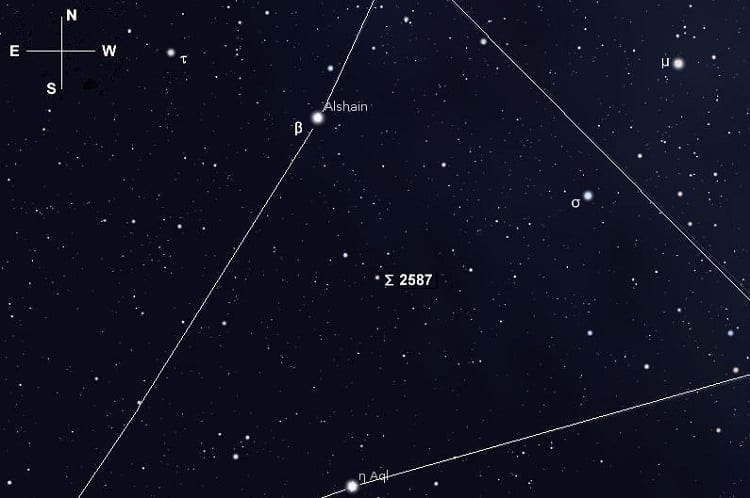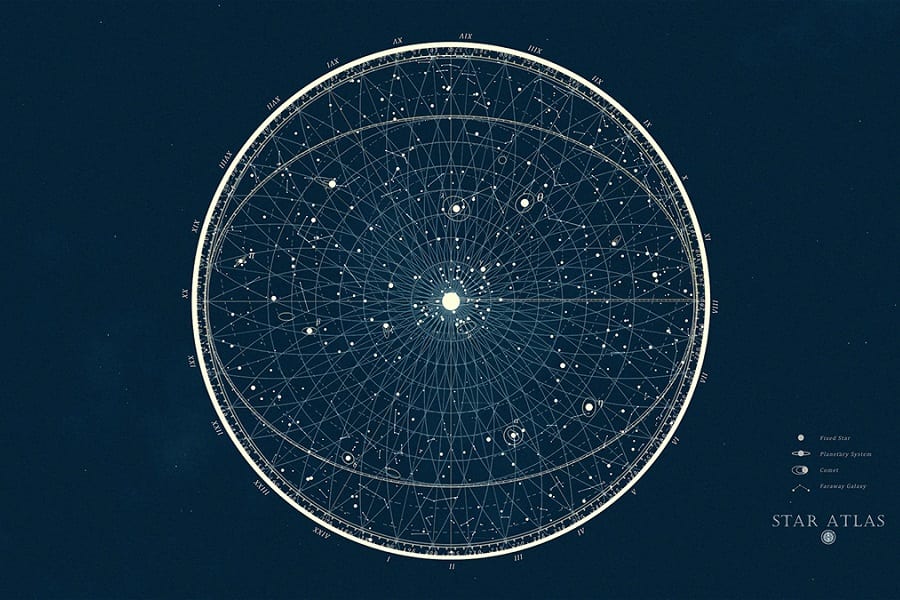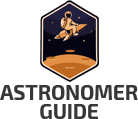If you love the night sky, you’ll likely want to explore it in more detail.
It’s exciting to think that you can move beyond the stars you see clearly and find less noticeable stars that are lingering around, just out of plain sight. If this sounds like an impossible goal, it’s good to know that you can achieve it by star hopping!
What is star hopping?
Star hopping is when you find new stars in the sky by starting with stars you already know and then using these to “hop” over to other stars you haven’t explored.
Star hopping can help you to increase your knowledge of the stars and constellations while also helping you have fun in the process!
It’s a fantastic way to start astronomy and perhaps even turn it into a family activity. Let’s look at how you can start star hopping from your backyard.
Contents
Where Do You Begin?
Let’s be honest: the thought of trying to make sense of the vast expanse of stars can be dizzying. Where on earth do you start to try seeing patterns in the sky?
That’s why amateur astronomers make use of star hopping so that they can make better sense of the sky’s celestial wonders.
A good starting point is to focus on the stars that are the brightest as these will – quite literally – light your way as you star hop.
These stars might also form patterns (think of Orion’s Belt as an example) that will start to take shape, and once they do they will be your foundation from which you will hop onto other stars that might not be as visible.
What Do You Need To Star Hop?
Obviously, it’s impossible to star hop with the naked eye. Sure, you might be able to spot some of the brightest stars you can see, such as Sirius A, but you won’t be able to move on to other stars that are further away from you.
That means you’ll need to find a way to get a closer look at the sky. How?
You should start your stargazing and hopping with a trusty pair of binoculars. These will help you to get acquainted with the stars a bit better.
Once you’ve done that, you’ll want to move on to a telescope. The reason for this is that you can make use of its finder scope to provide you with a wider field of view.
A Telrad Finder Sight is an excellent item to use on your telescope if you’re serious about star hopping. Available from Amazon, this piece of equipment will provide you with information that shows you which stars are about 1, 2, or more degrees away from what you’re looking at, so it’s very useful.
Other items you will need:
Star Chart
You can’t just use your binoculars or telescope and take to the skies.
When you’re driving on a road and you get lost, you need GPS to help you find your way, right? Similarly, to prevent you from getting lost in the sky, you’ll need to use a star atlas or map. Here are some choices to consider.
- Deep Sky Log Atlas – This is a great resource that will help you locate deep-sky objects such as star clusters and nebulae.
- Aladin Sky Atlas – This is great for beginners because it provides you with photographic representations of the stars you wish to find, therefore making it easier to point them out.
- Free Star Charts – This website offers star charts that include steps for finding stars and star clusters, as well as descriptions of them.
Star charts can really help you to figure out where the different stars are located and what patterns the constellations create. For example, the “W” shape of the Cassiopeia constellation that contains five bright stars.
Red Torch
It’s a good idea to purchase a red torch so you don’t hurt your eyes when you need to consult your phone in the pitch darkness, such as to check your star chart. Looking at a bright white screen can be frustrating as well as harmful.
You can find a red torch on Amazon for $10.99. Made by WayLLShine, it provides light up to distances of 150 yards.
Smartphone App
Don’t forget to make use of apps!
These can be very useful to help you track stars as well as be more practical than using the internet, especially if you intend on bringing your smartphone along when you go stargazing.
- Star Chart is a good one to help you get started. You just have to point your device at the sky and the app will inform you what you’re looking at, whether it’s a star or planet. The app calculates the location of every planet and star. It’s available on both Android and iOS.
- Stellarium is another useful app to use for star hopping. It will also inform you of what you’ll be able to see in your location and it has a night sky map of planets and stars for any date and time, too. A cool feature is its “night mode” that turns your screen red to protect your vision.
An Example Of How Star Hopping Works

It’s sometimes not easy to imagine how star hopping would work. Once you’ve got all the items you need, such as those listed earlier in this article, you might be left wondering, “Okay, what now?” You’ve found the brightest star in the sky, but then what? Where do you go?
To help you see how star hopping would really work, here’s an example. Imagine you want to find Messier 101, a large spiral galaxy that’s above the Big Dipper’s handle. Now, to help you out, you’d start by finding the Big Dipper.
Once you’ve found that with your telescope finderscope, you’d then be able to find Mizar and the four stars located above it. These would then lead to Messier 101.
You might not see M101 through your finderscope but if you know it’s meant to be in that place, such as because your app or star chart told you it would, then you’ll be able to choose a low-power eyepiece on your telescope to see the dimly lit galaxy come to life.
Now, based on the above example, it’s clear to see that you need to be equipped with a good star chart otherwise you will be traveling blind. You also need a good star/constellation with which to start, such as a recognizable one. The trick is to be patient and take your time!
A Useful Tip For Beginners
If you’re just starting with star hopping, you can try this trick, courtesy of Sky At Night: position a lounger or chair north-south and make sure you sit in such a way that your feet are pointing north.
This means that you’re in the perfect position to see some great star-hopping starting points such as the Plough. From there you can locate the Pole Star, and trace the Ursa Minor, before getting to Cassiopeia.
It’s a good way to help you locate some useful starting points and then take your star hopping from there!
Related Questions
What, exactly, is a star map?
Also called a star chart, a star map is basically a map of what you’ll find in the night sky. It’s used by astronomers who divide these maps into grids so that they’re easier to use. Star maps can be used to successfully find stars, galaxies, and nebulae.
What’s one of the easiest constellations to find?
Orion is very easy to find because you can’t miss its three bright stars that are in a row, known as Orion’s Belt. Once you find Orion, you can easily locate Sirius, which is the sky’s brightest star and it’s found in the Canis Major constellation.
Conclusion
Star hopping is an exciting way to become better acquainted with more stars in the sky and discover their patterns. In this article, we’ve provided you with info and gear you need to start star hopping. We’ve also shown you an example of how star hopping works.
While the idea of star hopping can seem a bit overwhelming at first, it’s important to relax and enjoy the sights that you see through your binoculars or telescope!
Star hopping should be fun instead of stressful, and by taking your time and learning as you go, it will become a useful way to travel across the sky from the comfort of your home.


